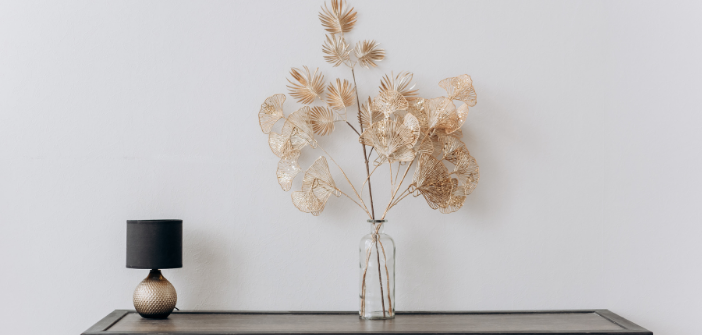There is always a moment when you walk into your kitchen and realize it’s time for a change. The kitchen is, after all, a sanctuary for you and your family. It’s where the day begins, with breakfast setting the starting point for everyone. You gather your thoughts for the day while sipping a cup of coffee, while the children quickly gulp down their bowl of cereal before catching the school bus. In these pandemic years, as many of us are forced to work from home, the kitchen takes on an even greater role in our daily lives; often, the only break we take happens in this room. We cook, prepare a sandwich, make that phone call standing up after hours spent sitting at our computer. It’s a place that witnesses a significant part of our lives and thus undergoes some wear and tear. In an ideal world, it would be enough to enter a specialty store, choose a new kitchen, and wait for the contractors to come and install it. A great plan if money is no object. For most of us, however, a new look means a more modest redecoration plan, which involves keeping the furniture while giving the room a fresh appearance.
Whether you’re thinking of renovating it because you’re tired of its look, planning to put it on the market, or simply wanting to make it more appealing for new tenants, when it comes to redecorating, the big question often arises: what is the most appropriate approach? Will you opt for a simple coat of paint, go for tiling, or install wallpaper? Not so long ago, wallpaper and kitchens, especially near countertops or in splash zones, weren’t compatible. The idea was that wallpaper is far too delicate for humid areas prone to dirt, grease, and high temperatures. Fortunately, technology has evolved, and today you can purchase [specialized kitchen wallpaper](https://www.papierpeintdesannees70.com/papier-peint/pieces/papier-peint-pour-la-cuisine/) covered with a robust vinyl coating, able to withstand the abuse near cooking areas. The advantages of wallpaper over tiling are clear: it’s cheaper, comes in a wider variety of patterns, and its impact on a room’s look far outweighs that of ordinary tiling.
The same can be said of the comparison between wallpaper and paint. What holds most people back is the preconceived idea that wallpapering requires special effort and skills that are the realm of professionals, not individuals. While this may have been true in the past, when old paper-based wallpapers required precise soaking times, it’s simply no longer the case today. Installing modern wallpaper on a wall is something that can be done easily with minimal DIY skills. The world of wallpaper opens an almost infinite range of styles and decorative materials. When it comes to finding the available designs, you can rely on the web, as there are many online wallpaper stores with filters for patterns, colors, materials, and tools to know how much you’ll need for your project.
It goes without saying that before placing an order, you must measure the size of the walls you want to decorate and keep in mind the color scheme you aim for. Once you’ve chosen the model you want, check if the wallpaper in question is in stock, otherwise, the waiting times may be longer. It’s now time to get started!
A list of tools you will need
Wallpapering can be a relaxing and enjoyable hobby, provided you ensure that you have all the tools necessary for your decorating project. Let’s review the list of these.
Here are the tools you need to have at hand:
– A stepladder
– A trestle table
– A folding rule and a measuring tape
– Wallpaper scissors
– A utility knife
– A plumb line or a chalk line
– A pair of sharpened pencils
– A wallpaper paste brush, a paste roller, a paste bucket, and some sponges
– A wallpaper spatula
– A seam roller
– A pressure roller
Most of these tools are not particularly expensive and are easy to find in any DIY store or hardware shop.
Make sure to cover floors and kitchen equipment that you cannot move.
You want to make sure that nothing will be damaged or splattered. Ideally, the room you want to decorate should be empty, but since it’s a kitchen, we know some elements cannot be moved. Invest in a high-quality and sturdy protective tarp and ensure that all wall-mounted elements are properly covered, as well as the floor. Wallpapering requires glue, and you don’t want to showcase beautifully decorated walls combined with a stained floor.
Moreover, very importantly, remember that electricity must be turned off in the room, not just the lights but all elements. You will be mixing water with wallpaper paste, and we all know it doesn’t mix well with electricity. Safety first.
Check the condition of your walls before wallpapering
Wallpaper should be applied to smooth and even walls. If this isn’t the case, you may need to use a primer beforehand. Also, check for any traces of [mold](https://fr.wikipedia.org/wiki/Moisissure) before starting. Using a plumb line, mark a guide for the first sheet to ensure it is perfectly vertical. Apply the glue to the wall using a paint roller to avoid splashes. Apply the adhesive evenly and lay the sheet on the wall immediately afterward. Now use a clean, dry wallpaper brush to flatten the sheet, working from the center outwards. This task should be done using a pressure roller, without exerting too much force. The key is to work methodically to eliminate any air bubbles that might be trapped. If the edges don’t stick well, you can add a bit of glue with a fine brush. Take your time to lay the first sheet, as it will be crucial for the success of your project. Once that’s done, proceed to lay the other sheets and let them dry. A small effort is enough, and you will soon be able to celebrate your amazing decorating skills.


